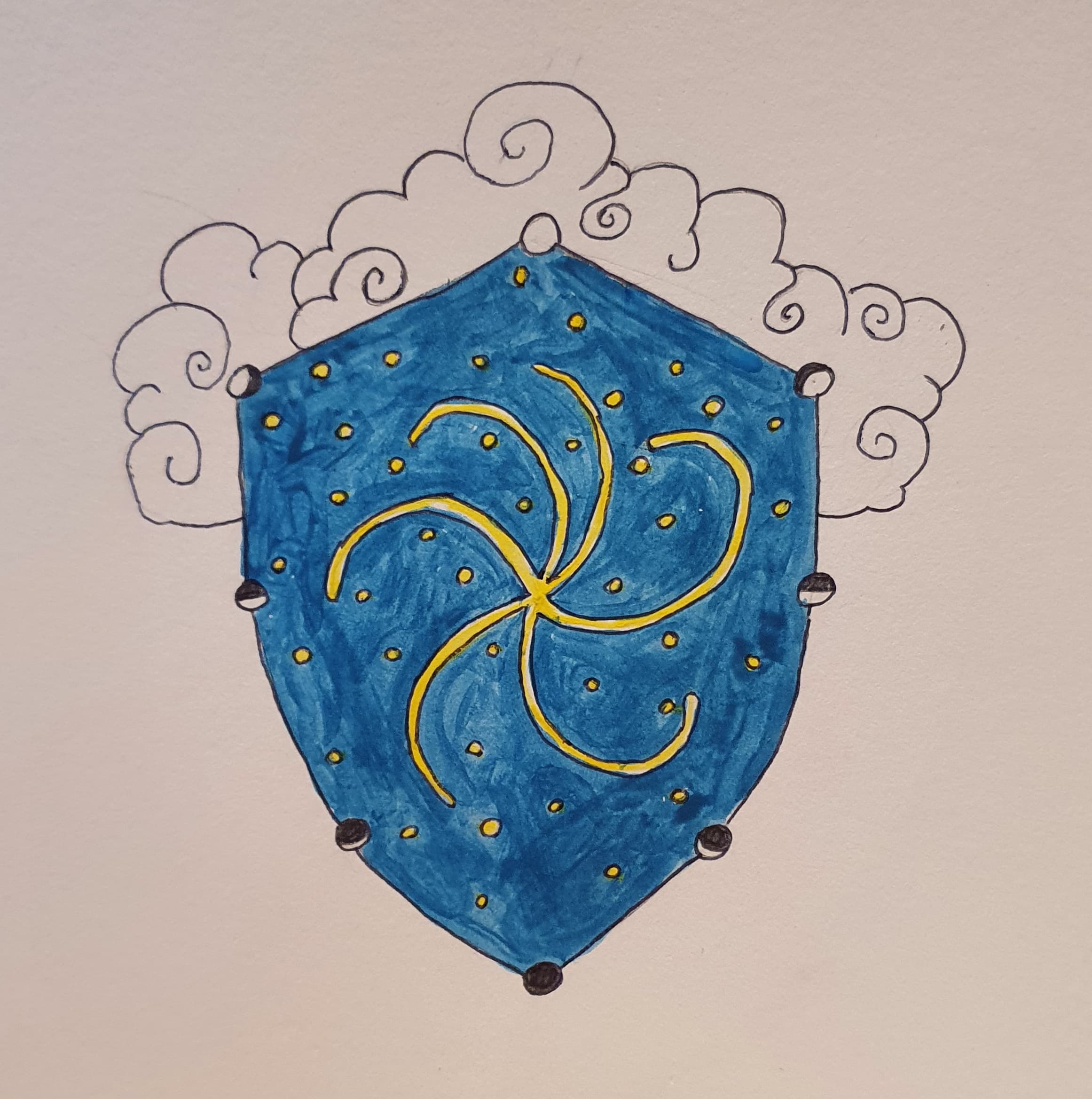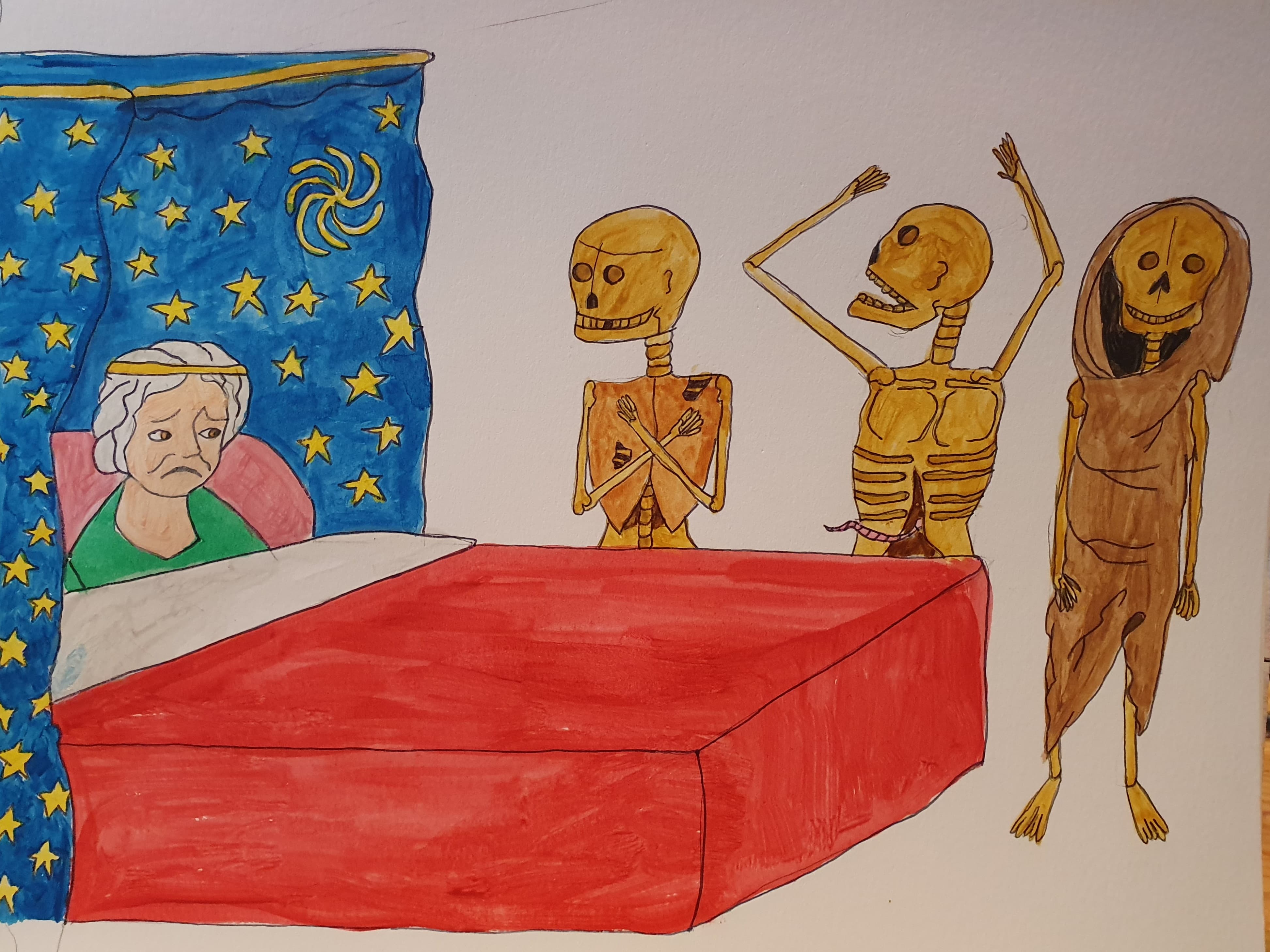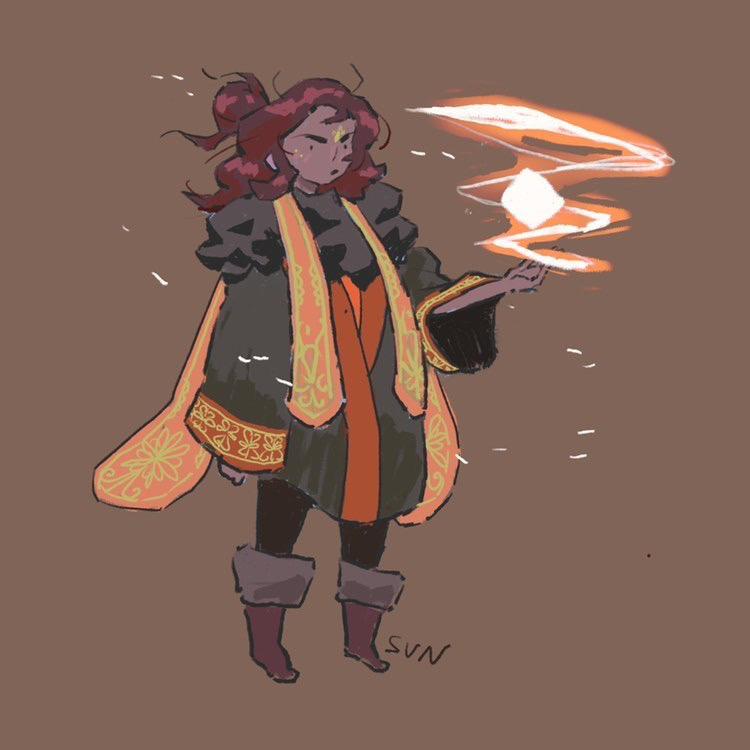The Sorrow of Kings
Participants
The Raven:
Otherwise referred to as Eneas or the Gatekeeper.The Saeric Kings
Lormont, the De Créquy Royal Family A deeply pious man, Roi Naël, V Roi of Lormont, was a pious man believed to be weak-willed against some of the more domineering personalities in his Royal Council. In Lormont's traditional Celestial Faith, it is an accepted fact that the stars might impart prophetic, and that the sun is the physical manifestation of the Phoenix. 'The Gatekeeper's' message of mankind's abandonment by their cthonic goddess was a serious threat to the Celestial Faith.
Versarna: Rí Odhran Ó Fearghail, Twelfth King of Men No written evidence survives outside of Versarna regarding the reign of Rí Odhran.
The Threat
The earliest contemporary account of a meeting between the Raven and one of the Saeric kings, and is detailed in the Lormontai chronicle on the lives of their monarchs, The Chronicle of the Star-Chosen. The Raven, calling himself 'the Gatekeeper', had come to Roi Naël III in a dream to deliver a dire warning. The Raven alleged that the sin and deceit of mankind had broken the Phoenix's heart, forcing Her divine body to undergone its brutal cycle of firey death and rebirth. The Phoenix that had risen from the ashes of Her grief had grown cold and merciless towards humans. From that moment, every mortal Soul that fell into its eternal sleep would find the gates to the Afterlife barred against them. Documents held in the royal archives in Kredashmi and Lormont describe similar meetings between each monarch and a messenger of the Phoenix. In an uncharacteristic display of honesty, the Mother Temple in Latharin has admitted to poessessing archival evidence that reveal Karr Etharian I was also visited on multiple occassions by the Raven. Much to the frustration of academics across the Saeric Lands, no one other than the most senior Saints-servant scholars are allowed access to these writing.The Terms
Even before His true identity was revealed, the 'Gatekeeper's' gesture was never viewed as a wholly selfless act. Four main tasks were specified in order to help aid the passage of Souls through the Gates of the Afterlife: Firstly, that the family and friends of the deceased should collect their three most valuable coins and burn them with a cord of willow. This was to be burried in the left hand of deceased.Secondly, that a traditional burial sites should be abandoned (allegedly because they were well known to the Phoenix's servants), and new locations close to rivers and lakes should be found. Thirdly, funeral rituals were now to encorporate prayers to the Gatekeeper in order to beseech His help in aiding the deceased.
Roi Naël believed that your cousin's death was an acceptable pain for your family to bear to secure safe passage into Death for the Souls your people. Forgive me, Majesté. I can offer you no more words of comfort.
Aftermath
In the six years following the agreement with the Raven, a rise in seditious speech trials, interspersed with popular uprisings, were experienced along the Lormontai-Kredasene border. Records held in the Second Judge's archive in Brehaanbeck reveal that much of this unrest was linked to dissatisfaction within poorer communities concerning the burning and burial of their precious coins, and retaliation towards rumours of grave robbing. There are no surviving contemporary accounts to suggest that 'the Gatekeeper' visited the Saeric kings again after the completion of the sacrifices. It was only following the Great Confiscation and the Resurrection of the Throwbacks, that the Saeric peoples learned of the Phoenix's murder and the usurpation of Her throne by the Raven. Of the four Saeric Kings, only Rí Odhran had survived to lean this news. The truth of their deceit at the whim of the Raven sent shockwaves through the royal Saeric houses. In Kredashmi, Throwback Julius Gravestein's returned on the ship carrying König Louren's body back from one the Hubraic War's most brutal battle. It is not known when the Kredasene Throwback informed the dead König's half-brother of the Raven's deception. However, Henrik's angry denunciation of his predecessor during his coronation suggests the new König was unable to justify or forgive his brother's actions.Type
Modern scholars and theologians disagree as to whether the alliance should be considered political or religious in nature.Date
Thirdmonth 832 HEOriginal Name
If the alliance was ever named by its participants, that name has been purged from the historical record....And in that moment, a huge bird descended from the forest canopy with a caw! that shattered the haze of sleep from my unconscious mind. As the ceature landed on the ground, He took the shape of a young man, kneeling in the dirt before me. I could see the feathers threaded through his hair, as black as His raven wings. "Peace and good will to you, Star-Chosen," He spoke, in a voice not of this realm. "I am Eneas, true and loyal servant of the Phoenix, Gatekeeper of the Death. I bring you sorrowful tidings."
History
The Phoenix
Of all the gods and goddesses to rise and fall in the worship of man, only the Phoenix has survived into the modern age. Raskvaerii scholars have traced Phoenix worship to the very earliest accounts of religion in the Hubraic Age. This ancient pantheon of gods were largely personifications of nature, with the Phoenix symbolising both death and rebirth. Before the Phoenix's control of the Afterlife was usurped by the Raven, it was believed that the Souls of mankind managed the judgement of wrongdoings, and the repair of broken relationships, amongst themselves. This judgement was based on the weight of guilt a Soul had carried throughout their life. Souls were encouraged to reconcile themselves with this guilt and, where possible, ask forgiveness of those they had offended or harmed. Once a Soul had healed from the events of their previous life, those who chose to return to life appealed to the Phoenix for rebirth. It was a common belief throughout all Saeric Lands that hauntings were caused by Souls who feared passing through the gates to the Afterlife. They hid from the Phoenix's servants, wandering the earthly realm until they could bring themselves to seek forgiveness.The Slain
Heloise Rhalen: Half-sister of König Lourens. Burned.Niamh Ó Fearghail: Daughter of Rí Odhran. Garrotted.
Arsinoë de Créquy: Granddaughter of Roi Naël. Drowned.
Conclusion
At face value, the false alliance that was forged between the Raven and the Saeric kings was intended to offer a lifeline to every Saeric soul. The Raven convinced the kings that the sacrifice of the three royal women would provide a diplomatic opportunity for a united plea to be made to the Phoenix. Should their selfless act fail to thaw the hatred in Her heart, then prayers and offerings would be needed to help 'the Gatekeeper' smuggle departed Souls into the Afterlife. Desperation forced the hand of these three kings, and a fear that the realm of the living would become plagued by the misery of the dead. The revelation by the Throwbacks of the Raven's deceit led to the event being named 'the Sorrow of Kings'. Countless families had burried precious portions of their earnings with loved ones. Countless more became sick with disease from the relocation of burial grounds near to fresh water sources. The royal families each lost a beloved sister, daughter or granddaughter. And the Raven learned how easily He could manipulate mankind. In these modern time, the tragedy of the Sorrow of Kings has largely been banished to the realms of cautionary tales. In the end, this alliance was but the first cruelty visited upon the Saeric Lands by the Raven. The second was the murder of the Phoenix and usurpation of Her throne. The third was the Confiscation of Power from all mankind. The fourth was the havoc and ruin inflicted upon Death itself. Whatever tranquil realm the Phoenix had governed over was transformed into the Pit of Perdition, its servants corrupted, and its Souls tormented. Instead of forging alliances with the Raven, mankind now prefers to hide the Souls of their dead. Sealed away in sacred reliquaries, these Souls are destined to remain silent and alone, suspended in holy incense, until either the Raven can Himself be overthrown, or the Phoenix can find a way to rise once more.No more will my people pray until their tonges be worne to stompes in their mowths. Their prayers shall do nought to helpe the sowles of our departed. Lourens and his wretchyd brethryn of Königes heth damned the sowles of their moste trew and lovynge subjectes. Kredasmi was ruled by a murderor and a knave! My broethers and susters of flame and scale, let me reforge his shattered crown, broken as my heart was by my suster's unnecessary death!"










The medieval style art gives me life. I love it. This is so interesting and so horrifying at the same time. The Raven is definitely not to be trifled with. Those poor people. :(
Explore Etrea
Thank you, I really enjoyed making this art. The medieval style means that I don't have to try too hard (and fail extremely hard!) to make anything look realistic. It's definitely an event I want to explore in book two. There seems to have been a conscious effort in Lormont and Kredashmi to forget the Sorrow of Kings, so while characters in the 'modern' time are dimly aware of it, they don't appreciate the impact it has had. :(